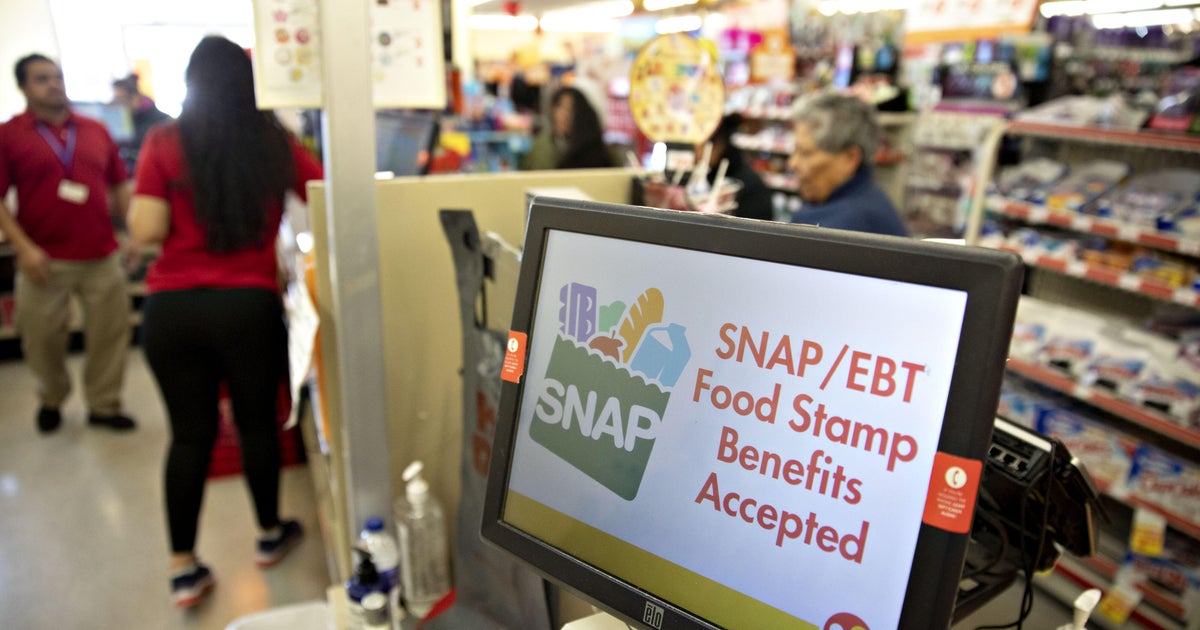States Warn SNAP Recipients of Possible Benefit Delays Amid Federal Government Shutdown
As the federal government shutdown continues, several states are warning Supplemental Nutrition Assistance Program (SNAP) recipients that they may face delays in receiving their food stamp benefits this November.
According to a notice published on Pennsylvania’s state website, “Starting October 16, SNAP benefits will not be paid until the federal government shutdown ends and funds are released to PA.” Similar warnings have been issued by states including New Jersey, Maryland, New York, and Texas.
The wave of announcements follows a letter sent by the U.S. Department of Agriculture (USDA) to state agencies on October 10. The USDA, which oversees the federal food stamps program, cautioned that if the lapse in appropriations continues, there will be “insufficient funds” to pay full November SNAP benefits.
When contacted for comment, the White House referred CBS News to the USDA. The USDA shared the letter it sent to states but declined to comment on the potential impacts of the funding lapse on the millions of Americans relying on SNAP.
Advocates express concern about the potential impact on struggling families. Gina Plata-Nino, interim director for SNAP at the Food Research & Action Center (FRAC), a nonprofit dedicated to ending hunger, said, “These are, for the most part, working individuals who still are living paycheck to paycheck.”
How SNAP Benefits Are Normally Administered
SNAP currently serves over 40 million Americans. Recipients receive an average monthly payment of $187—approximately $6 per day—loaded onto prepaid electronic benefit transfer (EBT) cards. These cards can be used to purchase food items such as produce, meat, dairy products, and other household staples.
While SNAP is federally funded and managed by the USDA, individual states administer the benefits and set their own payment schedules. According to FRAC, the program is “a delicate partnership of public and private entities.”
Each month, states send electronic case files containing recipient information to EBT vendors. These vendors process the data and load funds onto recipients’ cards to ensure benefits are available at the start of the month.
“EBT processors have to get all of this data in time,” Plata-Nino explained. “They need to be able to process the payment so when that person uses their card at an EBT retailer, the money will be there for the retailer to be able to swipe.”
Disruption Due to the Shutdown
The government shutdown has disrupted this process. In its October 10 letter to states, the USDA directed them to pause sending electronic case files to EBT vendors “until further notice.” This halt increases the risk of delays and disruptions in providing November SNAP benefits.
“Letting people go hungry is a choice, and it’s not a good one,” said Deb Powers, a 66-year-old Massachusetts resident and SNAP recipient, speaking to CBS News.
Contingency Funding Options
One possible solution could involve the USDA utilizing contingency funds to cover SNAP costs during the shutdown. According to FRAC, a $6 billion reserve was available during the Biden administration.
The USDA’s Lapse of Funding plan states that multiyear contingency funds can be used to cover state administrative expenses during a shutdown and to fund participant benefits if the lapse occurs mid-fiscal year.
However, it remains unclear whether the USDA plans to tap those funds to guarantee November benefits. The agency did not respond to requests for comment regarding this possibility.
During previous government shutdowns in 2018 and 2019, the USDA disbursed SNAP funds early to prevent interruptions, Plata-Nino noted. “This administration didn’t do any of that [this time], but they still have the contingency funding,” she said. “They have the money, so it really is a policy choice.”
State-Level Challenges
Some states might consider using their own budgets to cover SNAP benefits temporarily. However, this approach faces significant challenges, given the high monthly costs—tens to hundreds of millions of dollars—to fund the program.
Peter Hadler, deputy commissioner of Connecticut’s Department of Social Services, told state lawmakers that he does not expect the federal government to reimburse states if they use their funds to bridge the gap.
What This Means for SNAP Recipients
With the uncertainty surrounding funding, millions of Americans dependent on SNAP may face delays or reduced benefits this November. Advocates urge quick action to avoid exacerbating food insecurity for vulnerable populations during the ongoing government shutdown.
—
For more information on SNAP and how to access benefits, visit your state’s official SNAP website or contact local assistance offices.
https://www.cbsnews.com/news/government-shutdown-snap-recipients-usda/



